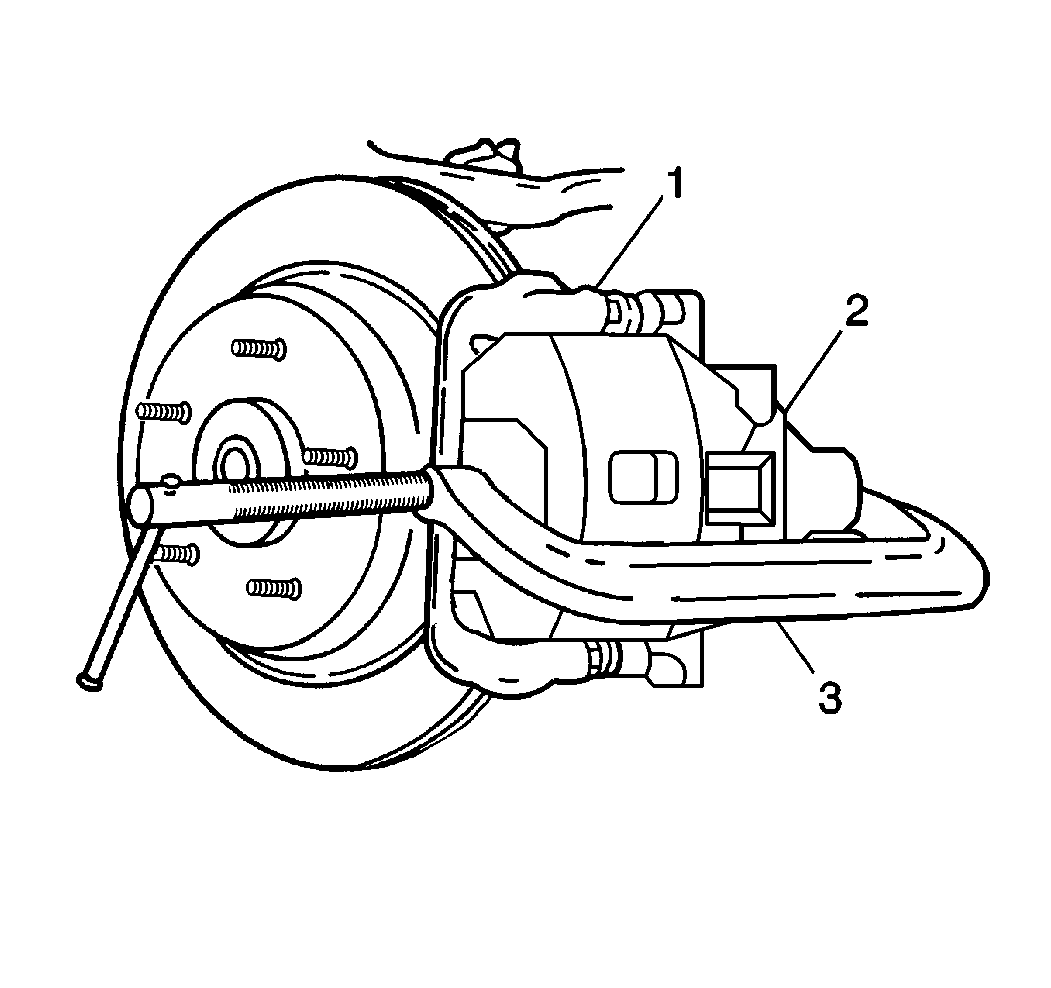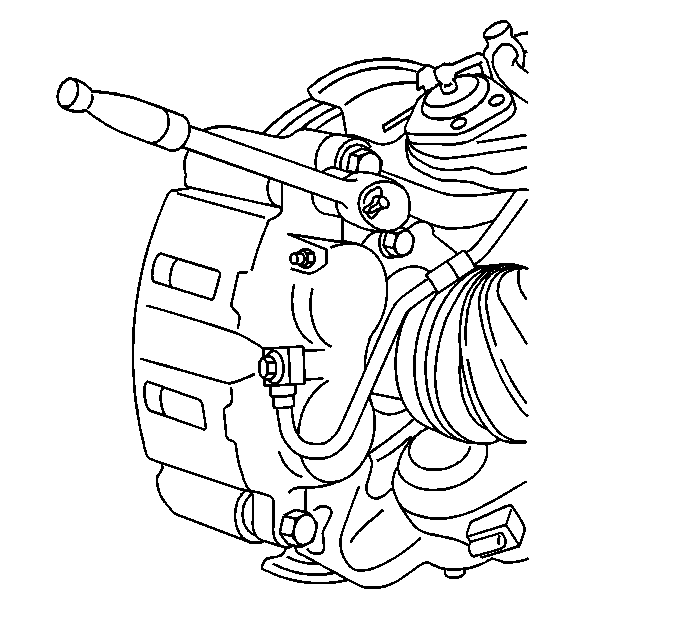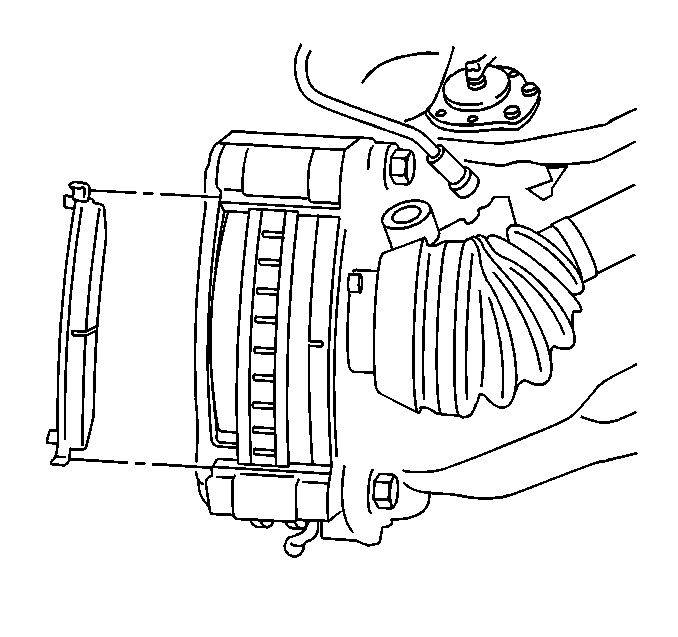Removal Procedure
- Inspect the fluid level in the brake master cylinder.
- If the brake fluid level is midway between the maximum-full point and the minimum allowable level, no brake fluid needs to be removed from the reservoir before proceeding.
- If the brake fluid level is higher than midway between the maximum-full point and the minimum allowable level, remove brake fluid to the midway point before proceeding.
- Raise and suitably support the vehicle. Refer to Lifting and Jacking the Vehicle in General Information.
- Remove the tire and wheel assembly. Refer to Tire and Wheel Removal and Installation in Tires and Wheels.
- Install and hand tighten a wheel lug nut in order to retain the rotor.
- Compress the front caliper piston.
- Remove the brake hose to caliper bolt from the brake caliper.
- Remove and discard the 2 copper brake hose gaskets. These gaskets may be stuck to the brake caliper and/or the brake hose end.
- Plug the opening in the brake hose fitting end in order to prevent excessive brake fluid loss and contamination.
- Remove the caliper guide pin bolts.
- Remove the caliper from the caliper bracket.
- Inspect the caliper bolts for corrosion or damage. Do not attempt to polish away any corrosion. If corrosion is found, use new parts, including bushings, when installing the caliper.

| 7.1. | Install a large C-clamp over the top of the caliper housing and against the back of the outboard pad. |
| 7.2. | Slowly tighten the C-clamp until the piston pushes into the caliper bore enough to slide the caliper off the rotor. |
| 7.3. | Remove the C-clamp from the caliper. |

Do not pinch off the brake hose with any tools.

Installation Procedure
- If reusing the brake caliper pin bolts and retainers, clean the brake caliper pin bolts and retainers using denatured alcohol, or equivalent.
- Dry the brake caliper pin bolts using non-lubricated, filtered air
- Apply high temperature silicone brake lubricant to the brake caliper pin bolts and retainers. DO NOT apply lubricant to the brake pad hardware.
- Verify that the linings are in place.
- Install the caliper to the caliper bracket.
- Install the caliper guide pin bolts to the caliper bracket.
- Assemble the NEW copper brake hose gaskets, and the brake hose bolt to the brake hose.
- Install the brake hose to caliper bolt and NEW washers to the brake caliper.
- Remove the wheel lug nut securing the rotor to the hub.
- Install the tire and wheel assembly. Refer to Tire and Wheel Removal and Installation in Tires and Wheels.
- Lower the vehicle.
- Fill the master cylinder to the proper level with clean brake fluid. Refer to Master Cylinder Reservoir Filling in Hydraulic Brakes.
- Bleed the hydraulic brake system. Refer to Hydraulic Brake System Bleeding in Hydraulic Brakes.


Notice: Use the correct fastener in the correct location. Replacement fasteners must be the correct part number for that application. Fasteners requiring replacement or fasteners requiring the use of thread locking compound or sealant are identified in the service procedure. Do not use paints, lubricants, or corrosion inhibitors on fasteners or fastener joint surfaces unless specified. These coatings affect fastener torque and joint clamping force and may damage the fastener. Use the correct tightening sequence and specifications when installing fasteners in order to avoid damage to parts and systems.
Tighten
Tighten the bolts to 115 N·m (85 lb ft).

Important: Install NEW copper brake hose gaskets.
Tighten
Tighten the brake hose bolt to 54 N·m (40 lb ft).
